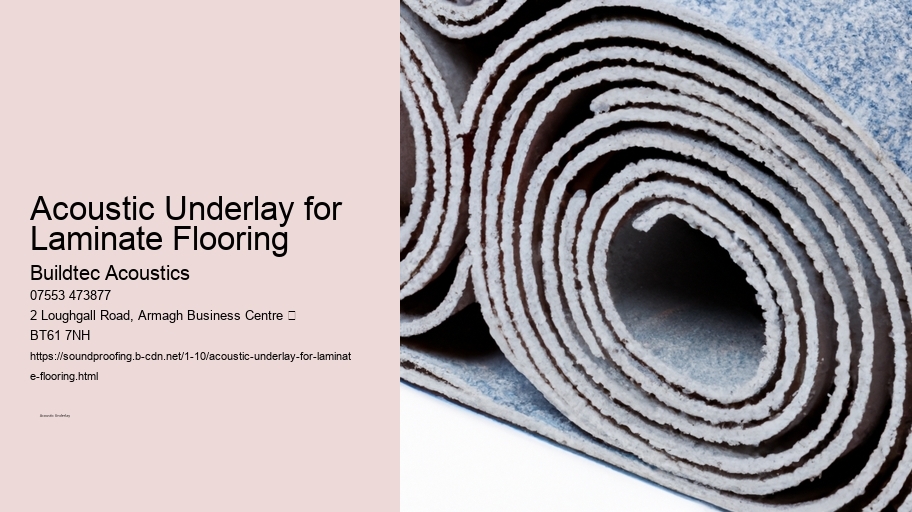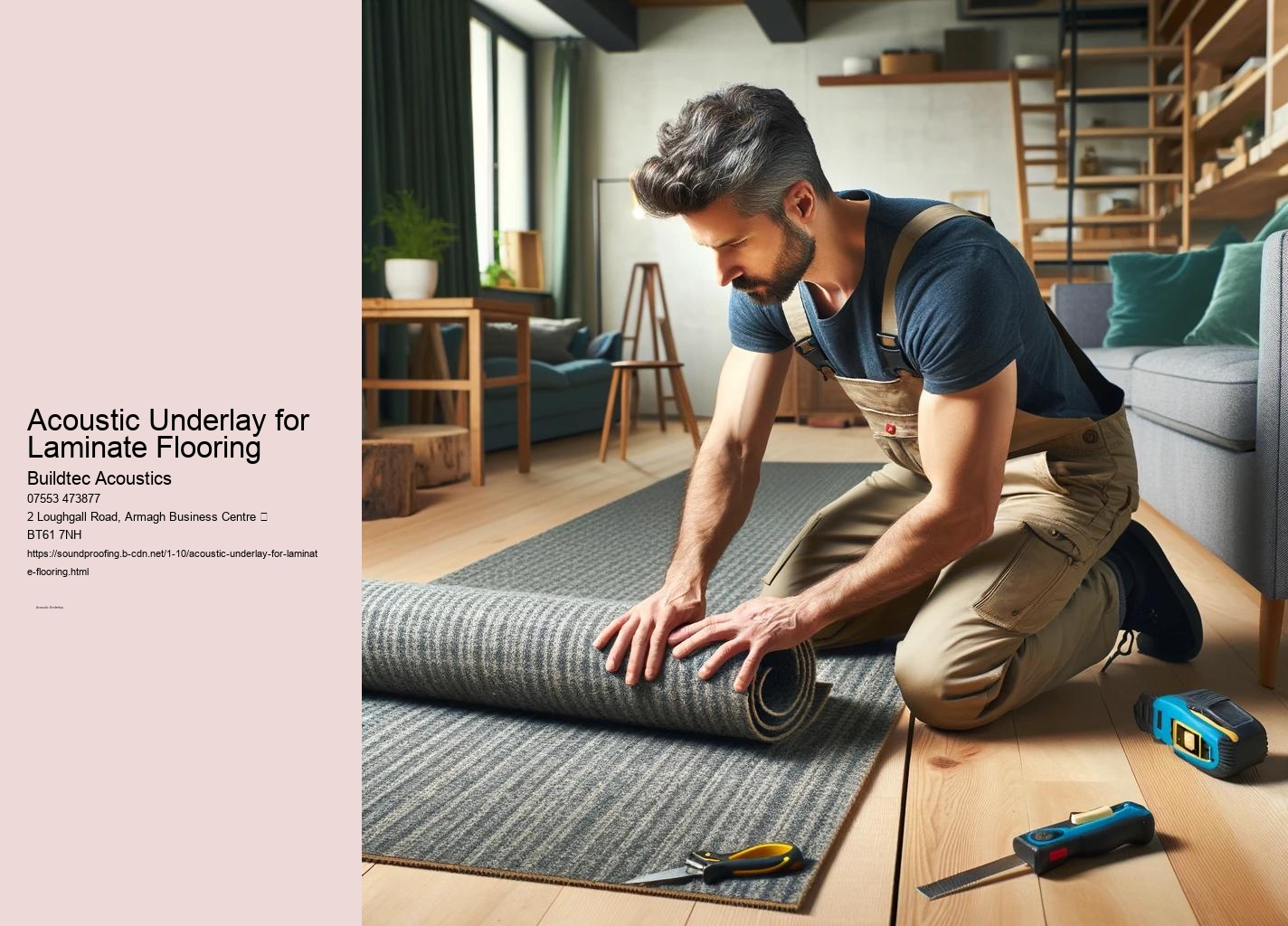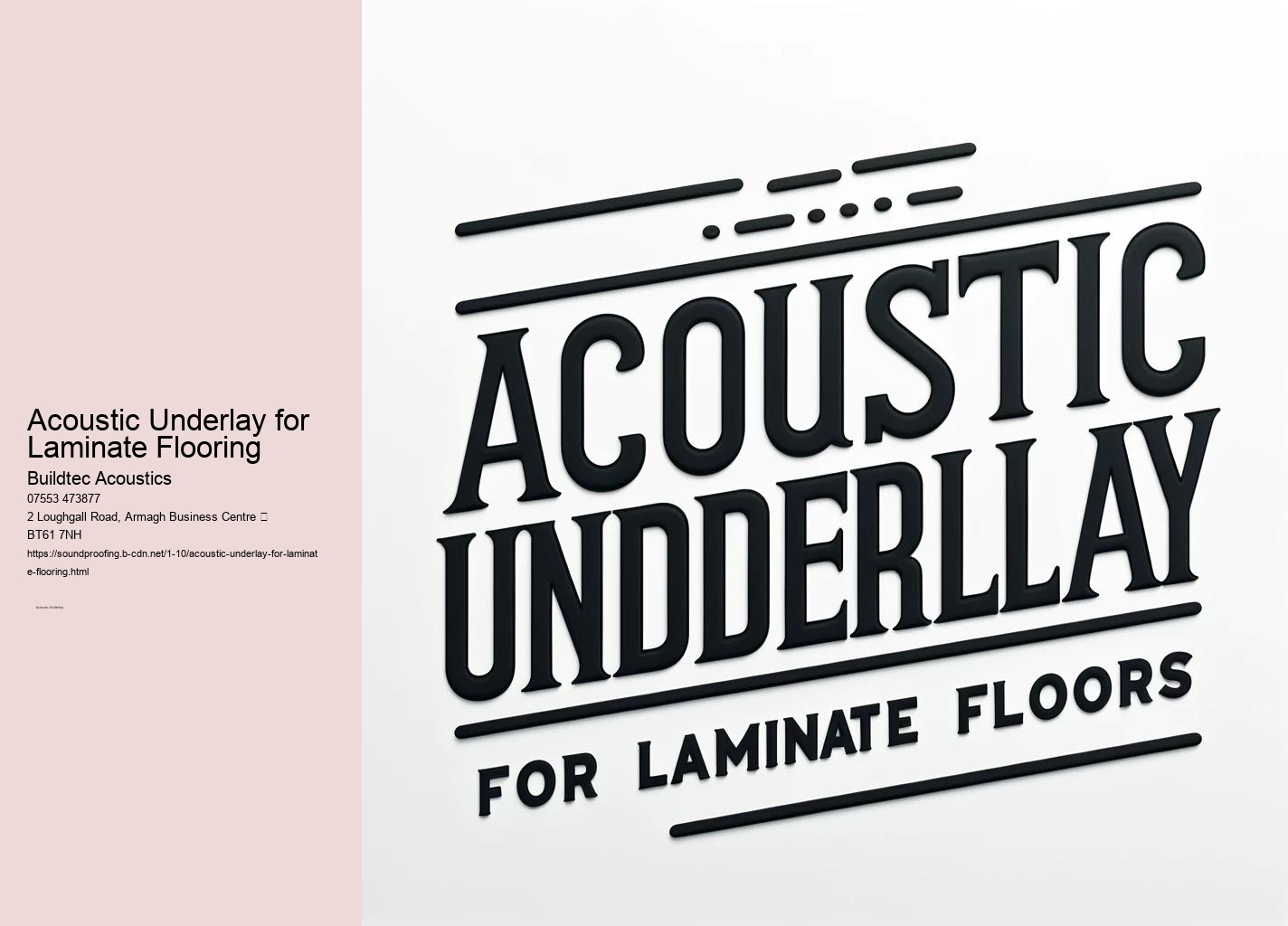

By using high-density materials like crumb rubber and cork, acoustic underlays efficiently control noise, reducing its impact on people in adjacent rooms or units. Acoustic underlays help absorb these sounds, resulting in better room acoustics. This process involves energy transformation, where sound waves are absorbed and converted into heat, which then dissipates harmlessly.
By selecting the right product for the specific noise control requirement, homeowners and businesses can create a quieter, more comfortable atmosphere. Floating floor systems also benefit from acoustic underlays, which provide an additional layer of soundproofing beneath the flooring material.
Underlays help to isolate vibrations, preventing them from being transmitted through the building structure and reducing their impact on adjacent rooms or units. Looking to dampen noise in your office then use acoustic underlay under your floor. Including acoustic underlays in renovation projects also helps ensure compliance with building insulation standards and soundproofing regulations, providing peace of mind for homeowners and builders.
Buildtec Acoustics offers underlays made from environmentally friendly materials, such as cork, recycled crumb rubber, and natural wool. Installing acoustic underlay beneath wood or laminate flooring can significantly reduce noise levels in rooms.
Installing acoustic underlays beneath carpets in office spaces helps mitigate foot traffic noise and other disturbances, improving the room's dynamics. By reducing both airborne and impact noise, these underlays help create a peaceful environment, whether in the home, office, or commercial settings. In rooms with underfloor heating, selecting an underlay with low thermal resistance allows heat to transfer efficiently without being obstructed by the soundproofing material.
How acoustic underlays contribute to noise reduction in multi-story structures.

Posted by Francis Mckenna on
Exploring the sustainable aspects of acoustic underlays.

Posted by Francis Mckenna on
How acoustic underlays improve room acoustics and reduce unwanted noise.

Posted by Francis Mckenna on
The compatibility with different floor finishes makes acoustic underlays an essential component in modern flooring design, helping to create a space that is both visually appealing and acoustically comfortable. For instance, Tecsound underlays are commonly used beneath concrete or screed subfloors to add an additional layer of soundproofing that is effective against vibration and noise. Some underlays are certified by Leadership in Energy and Environmental Design (LEED) standards, promoting sustainable building practices.
Additionally, these materials provide excellent thermal insulation, enhancing the thermal resistance of the room while managing noise. By utilizing high-density materials like crumb rubber and cork, acoustic underlays effectively control noise, reducing its impact on people in adjacent rooms or units.
With a range of materials, including cork, foam, natural rubber, and recycled fibers, Buildtec Acoustics ensures that there is an environmentally friendly and efficient product for every need. Buildtec Acoustics offers a wide range of acoustic underlays designed to handle both airborne and impact noise, making them suitable for various flooring applications, including wood flooring, ceramic tiles, and laminate flooring.
They are particularly effective when used with materials like ceramic tiles or floating floors, providing both sound insulation and comfort underfoot. In residential buildings, whether in a semi-detached house or an apartment, acoustic underlays are often installed under laminate flooring, hardwood, or carpets to reduce noise transmission through walls, ceilings, and stairs.


Most underlays come in sheets or rolls and can be cut to size with simple tools like a utility knife. Buildtec Acoustics provides underlays with specific properties to address either airborne or impact noise. Acoustic underlays function by absorbing and dissipating sound energy, which helps in controlling noise and minimizing its transmission through flooring.
The materials used in acoustic underlays, such as foam, cork, and natural rubber, are highly effective in reducing vibrations and controlling noise. Reducing sound transmission class (STC) and impact insulation class (IIC) ratings in a building contributes to creating a more comfortable space, particularly in multi-story buildings where floors are interconnected through walls and joists, making noise control a priority.
The compatibility with different floor finishes makes acoustic underlays an essential component of modern flooring design, creating a space that is both visually appealing and acoustically comfortable. Reducing sound transmission class (STC) and impact insulation class (IIC) ratings in a building contributes to creating a more comfortable space, particularly in multi-story buildings where floors are interconnected through walls and joists, making noise control essential.
Hard surfaces, such as hardwood and laminate, often amplify sounds like footsteps, which can lead to unwanted echo and reverberation. Acoustic underlays do not compromise the aesthetics or design of the finished floor.
This helps improve communication between occupants by reducing noise interference. When considering soundproofing methods, acoustic underlays provide a reliable option for reducing noise pollution, enhancing room acoustics, and creating a quieter and more comfortable atmosphere.


For instance, Tecsound underlays are commonly used beneath concrete or screed subfloors to add an additional layer of soundproofing that is effective against vibration and noise. Impact noise, such as footsteps on laminate flooring or vibrations from a washing machine, can be minimized using dense materials like natural rubber or foam. These options support environmentalism by reducing the need for virgin materials and lowering overall pollution.
This helps improve communication between occupants by reducing noise interference. These underlays not only help with noise reduction but also improve thermal conductivity, promoting efficient heat transfer in the room.
These underlays act as a cushion that minimizes the transmission of vibrations and sound through the floor. Whether in a single-family detached home or a semi-detached house, installing acoustic underlay ensures that daily activities do not negatively impact others in the building.
Buildtec Acoustics provides a diverse range of acoustic underlays specifically designed to address both airborne and impact noise, making them suitable for various flooring applications such as wood flooring, ceramic tiles, and laminate flooring. Acoustic underlays work by absorbing and dissipating sound energy, which helps to reduce noise transmission through floors. dynamic
The compatibility with different floor finishes makes acoustic underlays an essential component of modern flooring design, creating a space that is both visually appealing and acoustically comfortable. These materials also provide excellent thermal insulation, enhancing the thermal resistance of the room while controlling noise. Additionally, these materials provide thermal insulation, enhancing the thermal resistance of a room while also managing noise levels.
Reducing sound transmission class (STC) and impact insulation class (IIC) ratings in a building helps create a more comfortable space, particularly in multi-story buildings where floors are interconnected through walls and joists, making noise control important. Acoustic underlays are also effective for vibration isolation, particularly in spaces with significant sources of vibration, such as near heating equipment or heavy appliances.
Acoustic underlays do not compromise the aesthetics or design of the finished floor. The installation of acoustic underlays is straightforward and suitable for both professionals and do-it-yourself (DIY) enthusiasts.
These materials offer excellent thermal insulation, meaning that in addition to controlling sound, they help enhance the thermal resistance of the room. These underlays contribute to noise reduction and enhance thermal conductivity, promoting efficient heat transfer in the room.

Acoustic underlays are an excellent choice for renovation projects as they can easily be installed under new flooring to improve noise insulation. They help bring older buildings up to modern soundproofing standards, making them more comfortable for occupants.
Yes, acoustic underlays are effective in reducing foot traffic noise by absorbing the impact of footsteps. This is especially important in areas with high foot traffic, such as offices or apartments, where noise reduction can greatly improve comfort.
Yes, certain acoustic underlays are designed to be used with underfloor heating systems. These underlays have low thermal resistance, allowing efficient heat transfer while also providing noise reduction. It is important to choose the right type of underlay for compatibility with underfloor heating.
Yes, acoustic underlays provide thermal insulation by adding an extra layer between the flooring and the subfloor. This helps to maintain a comfortable temperature in the room and can also contribute to energy efficiency by reducing heat loss.